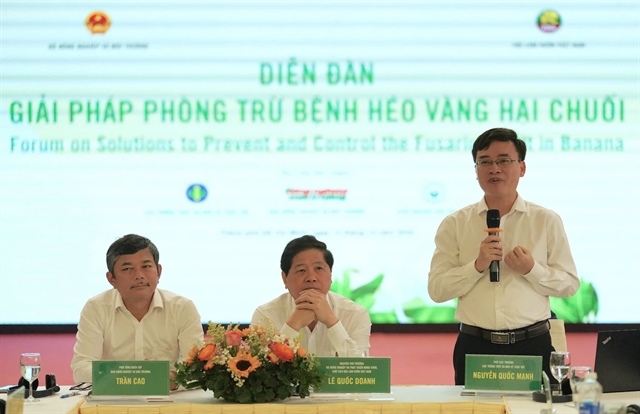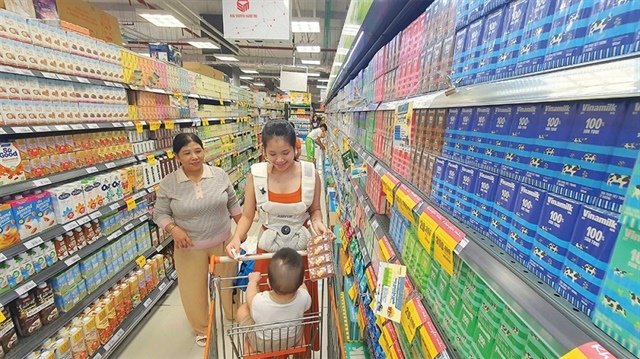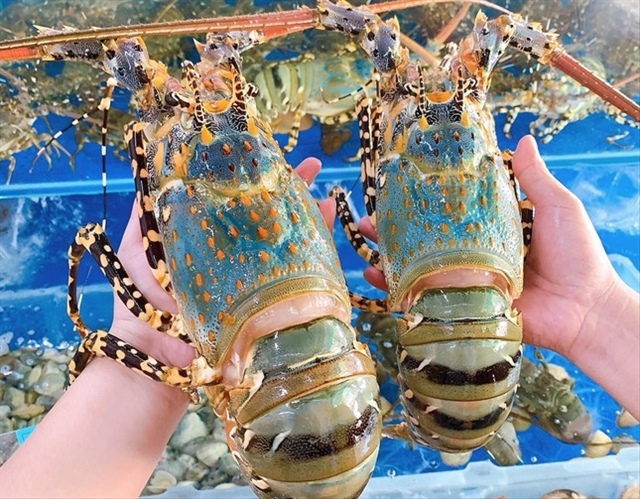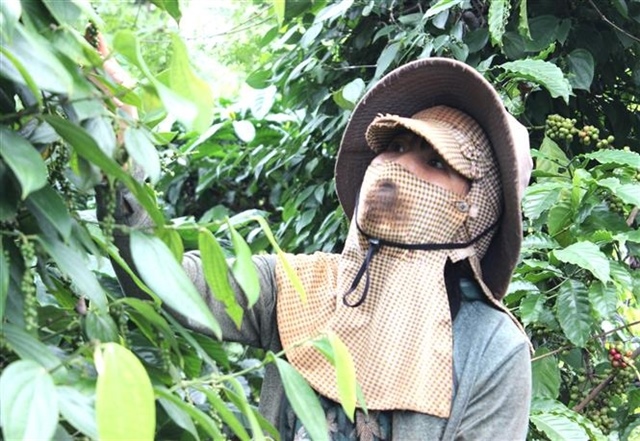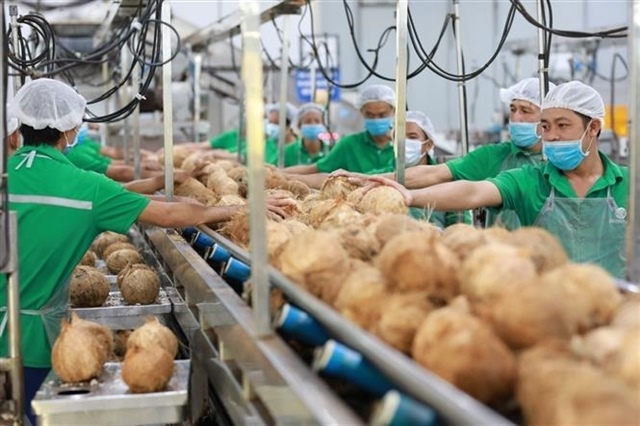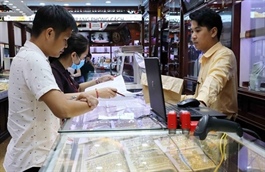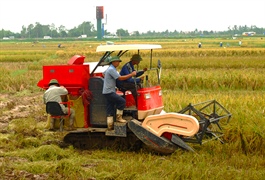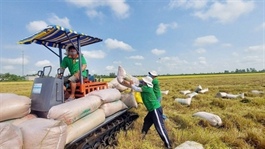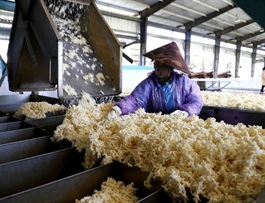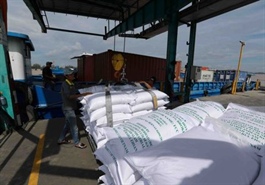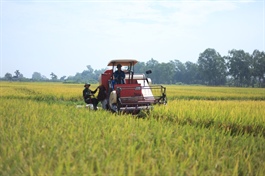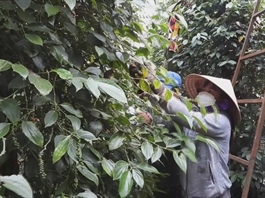Việt Nam has chance to promote rice exports to UK
Việt Nam has chance to promote rice exports to UK
Việt Nam now has a great opportunity to expand its rice market share in the UK after India, the biggest supplier of the grain to this market, banned exports, said Trade Counsellor Nguyễn Cảnh Cường at the Việt Nam Trade Office in the UK.
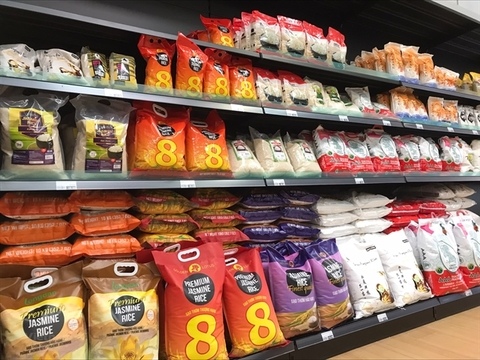
Việt Nam's jasmine fragrant rice and other speciality rice kinds for sale at a supermarket in the UK. — VNA/VNS Photo Minh Hợp |
The UK, home to a community of over 5.5 million Asian-origin people, has high rice demand while it doesn’t produce rice. In 2022, its rice import volume increased 4.1 per cent year on year to over 678,000 tonnes while the value rose 7 per cent to more than US$603 million.
Last year, Việt Nam’s rice export to this market grew strongly to approximately 3,400 tonnes worth over $3.7 million, up 24.5 per cent in volume and 34 per cent in value from 2021. However, the country accounts for just 0.6 per cent of the UK’s rice import at present, ranking 14th among exporters there, according to statistics cited by Cường.
He said the export ban by India, which makes up nearly 27 per cent of the UK’s rice import volume, will trigger a shortage of about 75,000 tonnes of rice in this market in the second half of 2023.
The sudden decline in rice supply from India will create advantages for other exporters, including Việt Nam, the Trade Counsellor noted, perceiving that it’s now a good chance for Vietnamese rice to increase its market share in the UK, especially with favourable tariffs generated by the UK - Việt Nam Free Trade Agreement (UKVFTA).
Nguyễn Hải Nam, chairman of EUTEK Group, which exclusively distributes the rice brand of ST25 Ông Cua in the UK, said that the UK is a great potential market for Vietnamese rice, one of the items exempted from tax under UKVFTA, especially Việt Nam's long-grain rice.
Nguyễn Thị Minh Phương, product development manager, Longdan Group - one of the largest importers of Vietnamese goods in the UK, said that the demand for importing and consuming rice in the UK has increased sharply since the beginning of the year.
She cited that Longdan's imports of Vietnamese rice have so far this year increased by 40 per cent over the same period last year.
Though immediate impacts haven’t been recorded, India’s rice export ban is likely to affect supply sources in the UK in the future and subsequently boost imports from other countries like Việt Nam and Thailand. Meanwhile, consumers now prefer Vietnamese rice to that from Thailand thanks to more competitive prices and quality, she added.
Cường said dealing with no rice supply from India, British importers will switch to buying Vietnamese and Thai rice, indicating that it is an opportunity for Việt Nam to have a higher position in British rice importers' customer lists, mainly including Indian and Thai suppliers who have longstanding partnerships with them.
If Vietnamese exporters conduct professional marketing in the British market, such as advertising in English on local media, they can gain a bigger market share, including at the restaurants serving Asian tourists, who make up a large number among the tens of millions of visitors to the UK each year, according to the official.
Cường said Việt Nam is a major rice exporter, but Việt Nam's rice products exported to the UK as well as many other countries have often been sold on the domestic market under the brand name of distributors.
Therefore, branding is a long-term solution for Vietnamese rice to maintain market share in the UK once the quality of Vietnamese rice has conquered consumers, Cường said.
Nam said that it also needs the State's management to ensure the product quality of the brands. For example, ST25 fragrant rice was invented by engineer Hồ Quang Cua and is recognised as the world’s best. ST25 rice is exported to many European countries, but it has uneven quality because Việt Nam’s businesses have bought the seed of ST25 rice but produced under different processes.
Therefore, according to Nam, it needs to have a unified production process for this kind of rice labelled national brand to retain its rice brand integrity.
Cường has highlighted that to meet the requirements on product quality and agricultural production of the UK as well as Europe, Việt Nam’s producers need to apply Global GAP standards.
The State, the Ministry of Agriculture and Rural Development and rice-growing localities need to support farmers in technology and funds to expand the application of Global GAP. That makes importers and distributors in the UK and Europe interested in increasing rice imports from Việt Nam, according to Cường.
He has also recommended that to take advantage of this new export opportunity, the State should provide credit to the businesses to purchase rice exports.
Meanwhile, Nam said that Việt Nam’s rice exporters need to participate in fairs in the UK because the events will bring a great opportunity to find customers.
Việt Nam’s rice exports in the first seven months were estimated to reach about 4.83-4.84 million tonnes. It is expected to export about 7.5 million tonnes of rice in 2023.
Following India's imposition of a rice export ban, the export cost of Việt Nam's 5 per cent broken rice rose from $535 to $602 per tonne; and the price of its Jasmine rice jumped from $625 to $690 per tonne early this month.


